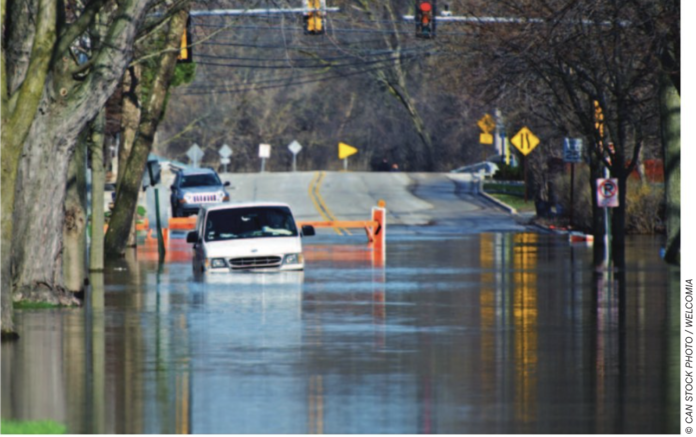Ontario Construction News staff writer
As flooding season approaches, the Ontario government says it is making steady progress to implement a flooding strategy announced one year ago. Initiatives being adopted will help ensure that the public is “better prepared for flooding events and flood risk is reduced for communities across the province.”
While implementation of the strategy is an ongoing process, Ontario has made continual progress on a range of activities. Improvements are being made to flood-plain mapping guidance and a multi-agency flood mapping technical team is being established to better identify hazard areas.
Additional initiatives over the last year include:
- Improvements made to the province’s emergency response system so that Ontario is better prepared to handle flooding events. The emergency management software will improve tracking, reporting and management of incidents and emergencies. Newly introduced software will also support engagement of municipal emergency management coordinators’ requests for assistance.
- Initiation of the provincial climate change impact assessment that will provide a greater understanding of how climate change is expected to impact the province, including flood risk.
- Continuation of the province’s partnership with the federal government to provide high quality water level and flow information for watercourses across the province, which helps to determine the potential for flooding and aids in the provision of early warning messages for flooding.
- Ongoing support for municipalities through the Ontario Community Infrastructure Fund, which helps small, rural and northern communities invest in local infrastructure and asset management planning to address their priority needs, including flood protection and climate adaptation.
- Engagement with municipalities, watershed partners and other key stakeholders in Muskoka, Magnetawan and Upper Ottawa river areas on key water management and operational decisions.
- Continuation of Ontario’s support, through participation on various committees of the International Joint Commission, which contributes to the ongoing management of water levels and flows in the Great Lakes.
“One important thing we learned from Ontario’s Special Advisor on Flooding and through developing the Flooding Strategy is that we can’t prevent floods, but we can prepare for them and try to mitigate damage,” said John Yakabuski, minister of natural resources and forestry .
“As we make our way towards the spring freshet, our government wants to remind the people of Ontario that we all have a role in minimizing the impacts of flooding. The best thing you can do is be aware and prepared.”
The government is also investing up to $2 million in additional funding to extend the Build Back Better pilot project through 2023, and helping eligible municipalities rebuild infrastructure damaged by extreme weather to a higher standard through the Municipal Disaster Recovery Assistance program.
Recent changes to the Disaster Recovery Assistance for Ontarians program make it simpler for applicants to claim emergency and evacuation expenses. We also expanded the eligibility criteria for small businesses which allows more owners-operators to qualify for assistance.
“Investments in local infrastructure projects, including flooding protection and climate adaptation projects, are central to our efforts to create safe, resilient and sustainable communities. Throughout this challenging year, we continue to invest in projects that protect Ontarians, strengthen communities, and support economic recovery,” said Laurie Scott, minister of infrastructure.







